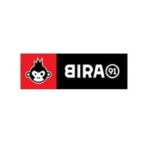Introduction
Graphic design is the art of communication through visual elements. It’s the marriage of creativity and functionality, where aesthetics meet purpose. In today’s digital age, where visual content reigns supreme. Graphic design plays a crucial role in shaping perceptions. Conveying messages and influencing decisions. At the heart of this vibrant industry are graphic design company studios. Hubs of creativity where ideas come to life, and visual storytelling takes center stage. In this article, we delve deep into the essence of graphic design studios, exploring their role, processes, and the magic they weave.
Understanding the Graphic Design Studio
A graphic design studio is more than just a workspace; it’s a creative sanctuary where designers brainstorm, ideate, and execute projects. It serves as a melting pot of talent, bringing together designers, illustrators, copywriters, and strategists under one roof. The studio environment fosters collaboration, encouraging cross-pollination of ideas and diverse perspectives.
The Anatomy of a Graphic Design Studio
- Vision and Mission: Every successful graphic design studio is built on a strong foundation of vision and mission. It defines the studio’s purpose, values, and aspirations, guiding its direction and decision-making processes.
- Team Dynamics: The studio’s success hinges on the synergy between its team members. From seasoned veterans to fresh talents, diversity in skills and perspectives enriches the creative process.
- Creative Process: A well-defined creative process forms the backbone of a graphic design studio. From client briefs and research to concept development and execution, each stage is meticulously planned and executed to ensure a seamless workflow.
- Tools and Technologies: Graphic design is a constantly evolving field, driven by innovation and technology. Design studios invest in cutting-edge tools and software to stay ahead of the curve and deliver high-quality results.
- Client Collaboration: Effective communication and collaboration with clients are paramount in graphic design. Studios prioritize understanding client needs, feedback, and expectations, fostering long-term partnerships built on trust and mutual respect.
The Role of Graphic Design Studios
Graphic design studios serve as creative catalysts, transforming ideas into visual narratives that resonate with audiences. Their role extends beyond mere aesthetics; they are storytellers, problem-solvers, and brand custodians.
- Brand Identity: Graphic design studios play a pivotal role in shaping brand identities. From logo design and typography to color palettes and brand guidelines, they craft visual elements that embody the essence of a brand and differentiate it in the market.
- Marketing Collaterals: In an increasingly digital world, marketing collaterals remain indispensable tools for brand promotion. From brochures and flyers to banners and social media graphics, graphic design studios create captivating visuals that capture attention and drive engagement.
- Digital Experiences: With the proliferation of digital platforms, user experience (UX) design has become integral to graphic design. Studios design intuitive interfaces, seamless navigation, and visually appealing websites and mobile apps that enhance user engagement and satisfaction.
- Print Design: Despite the digital revolution, print design retains its relevance in various contexts, including editorial design, packaging, and environmental graphics. Graphic design studios leverage print media to create tangible experiences that leave a lasting impression on audiences.
- Creative Campaigns: Whether it’s a product launch, social cause, or awareness campaign, graphic design studios conceptualize and execute creative campaigns that captivate, educate, and inspire action.
The Creative Process Unveiled
Behind every stunning design lies a rigorous creative process fueled by passion, curiosity, and collaboration. While the specifics may vary from studio to studio, the essence remains the same.
- Research and Discovery: Every project begins with thorough research and discovery. Designers immerse themselves in the client’s industry, target audience, competitors, and market trends to gain valuable insights that inform the creative direction.
- Conceptualization: Armed with insights, designers embark on the journey of conceptualization. Brainstorming sessions, sketching, and mood boards help crystallize ideas and translate them into visual concepts that align with the project objectives.
- Iterative Design: The design process is iterative, with multiple rounds of feedback and refinement. Designers solicit input from clients and peers, iterate on designs based on feedback, and fine-tune details until they achieve perfection.
- Execution and Delivery: Once the design is finalized, it’s time for execution. Designers leverage their technical expertise and creativity to bring the vision to life, whether it’s designing a logo, crafting a website, or creating print collateral. Attention to detail and adherence to deadlines are paramount during the delivery phase.
- Evaluation and Feedback: The journey doesn’t end with delivery; it continues with evaluation and feedback. Design studios seek feedback from clients and analyze the performance of their designs to glean valuable insights for future projects.
The Art of Collaboration
Collaboration lies at the heart of graphic design studios. Designers collaborate not only with clients but also with each other, leveraging their collective expertise and creativity to achieve remarkable results.
- Client Collaboration: Effective communication and collaboration with clients are essential for project success. Design studios prioritize understanding client needs, objectives, and preferences, fostering a collaborative partnership based on trust and transparency.
- Cross-disciplinary Collaboration: Graphic design is a multidisciplinary field that intersects with various disciplines, including marketing, branding, and technology. Design studios collaborate with experts from these domains to deliver holistic solutions that address clients’ diverse needs.
- Peer Collaboration: Within the studio, designers collaborate with their peers, sharing ideas, insights, and constructive feedback. Collaborative environments foster innovation, creativity, and continuous learning, enriching the design process and elevating the quality of work.
The Impact of Technology
Technology has revolutionized the graphic design industry, empowering designers with powerful tools and capabilities that were once unimaginable. From digital illustration and 3D modeling to augmented reality (AR) and artificial intelligence (AI), technology continues to push the boundaries of creativity and innovation.
- Digital Tools: Design studios leverage a myriad of digital tools and software, including Adobe Creative Suite, Sketch, Figma, and Procreate, to bring their ideas to life. These tools offer a wealth of features and functionalities that streamline the design process and enable designers to unleash their creativity.
- Automation and AI: Automation and AI are transforming the way graphic design is done, offering new possibilities for efficiency and creativity. AI-powered tools can generate design variations, automate repetitive tasks, and even assist with decision-making, freeing up designers to focus on high-level creative thinking.
- Immersive Technologies: Immersive technologies like AR and virtual reality (VR) are reshaping the way brands engage with audiences. Design studios are exploring innovative ways to incorporate AR and VR into their designs, creating immersive experiences that blur the line between the physical and digital worlds.
- Responsive Design: With the proliferation of mobile devices and varying screen sizes, responsive design has become essential for graphic designers. Design studios prioritize designing websites and applications that adapt seamlessly to different devices and screen resolutions, ensuring optimal user experience across platforms.
The Future of Graphic Design Studios
As we look ahead, the future of graphic design studios promises to be exciting and dynamic, fueled by advancements in technology, changing consumer behaviors, and emerging design trends.
- Embrace of Sustainability: With growing environmental awareness, graphic design studios are embracing sustainability in their practices. From eco-friendly printing techniques to minimalist design principles, studios are prioritizing sustainability in their projects and operations.
- Integration of Motion Graphics: Motion graphics offer a dynamic way to engage audiences and convey complex messages. Design studios are increasingly integrating motion graphics into their designs, whether it’s animated logos, explainer videos, or interactive presentations.
- Personalization and Customization: In an era of personalization, graphic design studios are tailoring their designs to individual preferences and demographics. Personalized marketing collaterals, interactive websites, and targeted advertisements are becoming the norm, offering more meaningful and relevant experiences to audiences.
- Design Thinking Approach: Design thinking, a human-centered approach to problem-solving, is gaining traction in the graphic design industry. Design studios are applying design thinking principles to tackle complex challenges, empathize with users, and innovate solutions that resonate with real-world needs.
Conclusion
Graphic design studios are the creative engines driving visual innovation and storytelling in today’s digital landscape. With a blend of artistry, technology, and collaboration, they craft experiences that captivate, inspire, and transform. As we navigate the ever-evolving landscape of web designing company in Dubai, one thing remains constant—the enduring power of creativity to shape our world and elevate the human experience.



